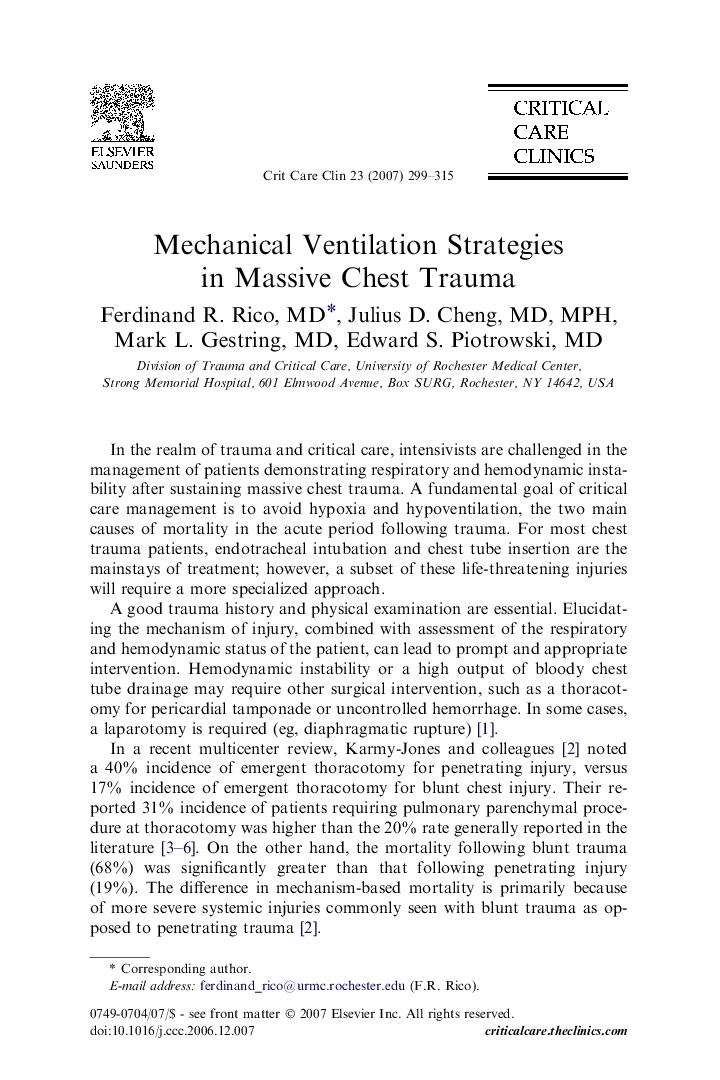| Article ID | Journal | Published Year | Pages | File Type |
|---|---|---|---|---|
| 3108490 | Critical Care Clinics | 2007 | 17 Pages |
Patients in extremis because of trauma-related massive chest injury require expedient evaluation and prompt intervention. The initial pathophysiology relates to the significant intrapulmonary shunting caused by disruption of pulmonary capillaries and extravasation into the alveolar spaces. Disproportionate or unilateral lung involvement needs measures more technical than general supportive care. Independent lung ventilation (mostly with unilateral lung involvement) and other strategies like inhaled nitric oxide, prone positioning, partial liquid ventilation, and extracorporeal membrane oxygenation (ECMO) have had good results. Intensivists confronted with this clinical subset may consider using these strategies as alternative/adjunctive options for optimizing respiratory and hemodynamic status in the supportive management of trauma-related acute lung injury (ALI) and adult respiratory distress syndrome (ARDS).
